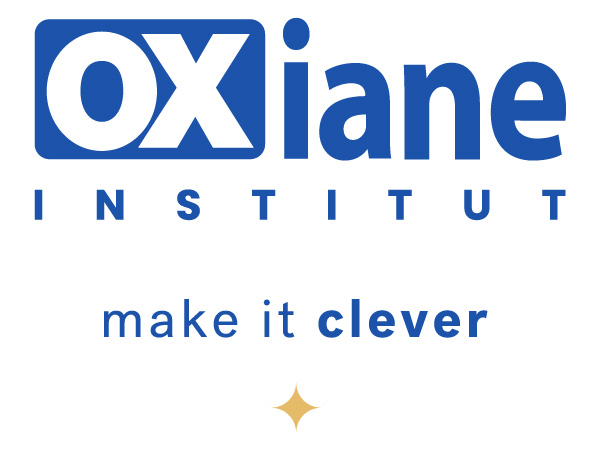-
Filière :
DevOps & Infrastructure
-
Sous-filière :
Cloud / IaaS / PaaS
-
Référence
FTVM
-
Durée
5 jours (35 h)
-
Prix par personne HT
3 650 € HT
 Description
Description
This intensive, extended-hours training course focuses on installing, configuring, and managing VMware vSphere® 7.
This course combines the content of the VMware vSphere: Install, Configure, Manage course with advanced tasks and skills for configuring a highly available and scalable virtual infrastructure. The course is based on VMware ESXi™ 6.7 and VMware vCenter Server™ 6.7. Completion of this course satisfies the prerequisite for taking the VMware® Certified Professional 6 exam.
Students who complete this course may enroll in any of several more advanced vSphere courses.
 Objectifs pédagogiques
Objectifs pédagogiques
- Configure and manage ESXi networking and storage
- Create, configure, migrate, manage, and monitor virtual machines and virtual appliances
- Use VMware vCenter Converter™ Standalone
- Manage user access to the VMware virtual infrastructure
- Use vCenter Server to monitor resource usage
- Implement VMware vSphere High Availability and VMware vSphere® Fault Tolerance
- Use Host Profiles to manage ESXi configuration compliance
- Use vSphere distributed switches to scale networking
- Use profile-driven storage and Storage DRS to scale storage
- Use VMware vCenter™ Update Manager to apply ESXi patches
- Use VMware vSphere® Management Assistant to manage vSphere
- Deploy ESXi, vCenter Server, and vCenter Server Appliance
- Use Image Builder to create an ESXi image
- Use VMware vSphere® Auto Deploy to provision ESXi hosts
 Public cible
Public cible
- Experienced system administrators
 Pré-requis
Pré-requis
Have a basic understanding of virtualization concepts
 Programme de la formation
Programme de la formation
1 Course Introduction
- Introductions and course logistics
- Course objectives
2 Introduction to VMware Virtualization
- Introduce virtualization and vSphere components
- Explain the concepts of server, network, and storage virtualization
- Describe where vSphere fits into the cloud architecture
- Install and use vSphere user interfaces
- Describe the ESXi architecture and configure various ESXi settings
3 Creating Virtual Machines
- Introduce virtual machines, virtual machine hardware, and virtual machine files
- Deploy a single virtual machine
4 VMware vCenter Server
- Introduce vCenter Server architecture
- Manage vCenter Server inventory objects and licenses
5 Configuring and Managing Virtual Networks
- Describe, create, and manage a standard virtual switch
- Describe and modify standard virtual switch properties
- Configure virtual switch load-balancing algorithms
6 Configuring and Managing Virtual Storage
- Introduce storage protocols and device names
- Configure ESXi with iSCSI, NFS, and Fibre Channel storage
- Create and manage VMware vSphere® VMFS datastores
- Introduce VMware vSphere® Storage Appliance
7 Virtual Machine Management
- Use templates and cloning to deploy virtual machines
- Modify and manage virtual machines
- Create and manage virtual machine snapshots
- Perform VMware vSphere vMotion® and vSphere Storage vMotion migrations
- Create a vSphere vApp
- Use VMware vCenter Converter™ Standalone to hot-clone a system
8 Access and Authentication Control
- Control user access through roles and permissions
- Discuss ESXi host access and authentication
- Integrate ESXi with Active Directory
- Introduce VMware® vShield™ products
9 Resource Management and Monitoring
- Introduce virtual CPU and memory concepts
- Describe methods for optimizing CPU and memory usage
- Configure and manage resource pools
- Use vCenter Server performance graphs and alarms to monitor resource usage
10 High Availability and Fault Tolerance
- Explain the vSphere High Availability architecture
- Configure an manage a vSphere HA cluster
- Set vSphere HA advanced parameters
- Enable vSphere Fault Tolerance (FT) on a virtual machine
11 Host Scalability
- Use Host Profiles to manage ESXi configuration compliance
- Configure and manage a vSphere Distributed Resource Scheduler™ cluster (DRS)
- Configure Enhanced vMotion Compatibility
- Use vSphere HA and DRS together
- Configure and manage vSphere Distributed Power Management (vSphere DPM)
12 Network Scalability
- Create, configure, and manage vSphere distributed switches, network connections, and port groups
- Discuss distributed virtual switch features, such as PVLANs, discovery protocols, Network I/O Control, NetFlow, and port mirroring
13 Storage Scalability
- Describe VMware vSphere® Storage APIs – Array Integration and Storage Awareness
- Explain profile-driven storage
- Add a storage policy to a virtual machine storage profile
- Introduce storage I/O control
- Create a datastore cluster
- Configure Storage DRS™
14 Data Protection
- Discuss a strategy for backing up ESXi hosts and vCenter Server
- Introduce the VMware® Data Recovery appliance
- Discuss solutions for efficiently backing up virtual machines
15 Patch Management
- Use VMware vSphere® Update Manager™ to manage ESXi patching
- Install Update Manager and the Update Manager plug-in
- Create patch baselines
- Scan and remediate hosts
16 VMware vSphere Management Assistant
- Describe VMware vSphere® Management Assistant (vMA)
- Configure vMA
- Discuss the VMware vSphere® Command-Line Interface command set
- Perform command-line operations for host management, network management, storage management, and performance monitoring
17 Installing VMware Components
- Use vCenter Linked Mode to manage multiple vCenter Server inventories
- Introduce ESXi installation
- Describe boot-from-SAN requirements
- Describe vCenter Server hardware, software, and database requirements
- Install vCenter Server (Windows-based)
- Introduce vCenter Server Appliance
- Install and configure vCenter Server Appliance
- Use Image Builder to create an ESXi installation image
- Use Auto Deploy to deploy a stateless ESXi host
Qualité
Cette formation est accessible aux personnes en situation de handicap, nous contacter en cas de besoin d’informations complémentaires.
Programme mis à jour le

